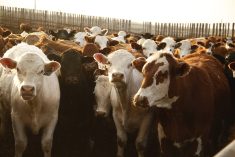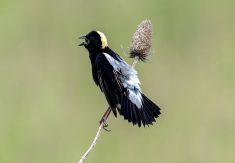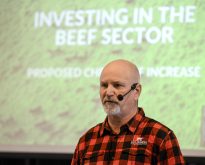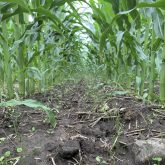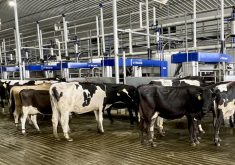Glacier FarmMedia – Cows aren’t the new coal and they aren’t the new Tesla.
Catchy as a recent Time Magazine headline, “Cows are the new coal”, may have been, it isn’t true. But it does fit nicely into a well-crafted and biased narrative that now plagues the cattle industry.
Carbon is used by plants to create feed for cattle. Cattle release that carbon, except for what remains in the soil, and it becomes part of a continuous cycle.
Read Also

Jennifer Hayes appointed for second term as the Chairperson of the Canadian Dairy Commission
Jennifer Hayes has been re-appointed as Chairperson of the Canadian Dairy Commission by Heath MacDonald, Minister of Agriculture and Agri-Food.
Coal, on the other hand, was once plants. When we burn coal, there is no cycle. It remains released. Even when we burn coal for electricity to power Teslas, as we do in Alberta and Saskatchewan, there is no recycling of the carbon.
To be fair, the Time Magazine article derived its headline and quote from a report by the Jeremy Coller Foundation-supported Farm Animal Investment Risk and Return, an organization that monitors intensive animal agriculture.
Coller is a successful, global-level money manager, philanthropist and lifelong vegetarian who appears to have leanings toward a much-reduced animal agriculture industry worldwide. But even he suggests animal agriculture has potential under the right conditions.
While equating cattle production to coal isn’t helpful for the cattle industry, it does point to serious vulnerabilities in the industry. There are several sources of beef cattle in this world. Some involve intensive production from calf to slaughter, based largely on use of ground water to irrigate silage, hay and grain. In other countries, much of this is backed by significant government subsidies.
There are also major-carbon-emitting livestock herds that are raised on pasture obtained by cutting old growth or rainforests and by slash and burn agriculture.
Then there is the sort of cattle production we are most familiar with in Canada, where cows and calves are reared mainly on rain-fed pastureland that isn’t suitable for other uses, and where calves finish in feedlots where surface-water irrigation is used for silage and nearly all the grain that is fed comes from dryland fields.
Many of the western world’s citizens might find a headline like “Cows are the new coal” acceptable because it reinforces a sentiment they may harbour after hearing and reading loads of pseudoscience and environmentalist outcry related to cattle farts and belches combined with the dangers of methane as a greenhouse gas and the waste of fresh-water resources.
But vast acres of pastureland wouldn’t be used for other purposes if cattle didn’t graze them. They would more likely be tilled for unsustainable cropping or left dormant, to lose biodiversity and productivity. They would also be more at risk of grass and prairie fire, which would release stored carbon — the very thing we seek to avoid.
It’s complicated to explain all the concepts around cattle becoming more efficient — through genetics and research and feed value — and that they have carbon lifecycles that are better than natural landscape processes. A sustainable agricultural system without cattle also defies recent trends toward regenerative farming.
Net-zero carbon emission cattle systems are within reach for the Canadian brand of cattle rearing and in fact may already be achieved in some cases. Telling that tale, and differentiating it from less environmentally sustainable beef production in other parts of the world, is going to be crucial for the future of the industry.
Can beef production as we know it survive if pasture and rain-fed production are harnessed with less environmentally acceptable forms of husbandry? Maybe not.
But then again, coal-fired Teslas are pretty popular in Canada.
This article was originally published at The Western Producer.




